Contraception

Find your nearest contraception provider
- You can book an appointment at a sexual health clinic for all types of contraception including LARC. Find a sexual health clinic if you are under 25 or 25 and over (external link)
- If you are registered to a GP in Haringey, you can access LARC from any the GPs that offer LARC (see map below). Be aware that only some GPs' offer LARC (long-acting reversible contraception).
- Free condoms are available from walk-in clinics and healthy living pharmacies
Women can access LARC across the borough, at any of the GP Practices listed below.

Find my nearest GP offering LARC (external link)
Do you know what to expect when visiting a clinic for a sexual health checkup?
Types Of Contraceptive

With so many different types of contraceptive available, you can usually find one that will suit your lifestyle and your body. Contraceptives prevent pregnancy, but only a male condom will also protect against STIs (sexually transmitted infections).
The page below provides a brief overview of the different types of contraception available. You can click on the bullets to jump to that section of this page. There is more detailed information on contraception available on the NHS website (external link).
Long Acting Reversible Contraception (LARC)
These are the most hassle free type of contraception - there's nothing to remember to take and they stay active to prevent pregnancy for months or years. Once they start to work, they are all over 99% effective.
You can get them from the GPs in the above map or one of the Walk-in clinics.
Contraceptive injection
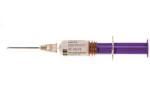 What is it? An injection of progestogen
What is it? An injection of progestogen- Starts to work: After 7 days
- Lasts for: 8 to 12 weeks
- Advantage: no need to remember daily pills. Lighter or no periods, less period pain and premenstrual symptoms
- Disadvantage: If you experience side effects there is no way to stop the hormones until they wear off, and they may last for some time after it stops being effective. Not usually suitable for people under 18
Implant
 What is it? A small, flexible rod put under the skin of the upper arm, which releases progestogen
What is it? A small, flexible rod put under the skin of the upper arm, which releases progestogen- Starts to work: After 7 days
- Lasts for: 3 years
- Advantage: Long term, but can be taken out sooner
- Disadvantage: Small procedure required to fit and remove
Watch a NHS video on subdermal implants (external link).
Intrauterine system (IUS)
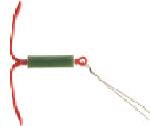 What is it? A small T-shaped plastic device put into the uterus, which releases progestogen
What is it? A small T-shaped plastic device put into the uterus, which releases progestogen- Starts to work: After 7 days
- Lasts for: 5 years
- Advantage: Long term, but can be taken out sooner. Periods usually become lighter, shorter and less painful
- Disadvantage: Irregular bleeding or spotting is common in the first six months. It may increase breast tenderness, spotty skin or headaches
Intrauterine device (IUD)
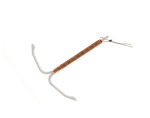 What is it? A small plastic device put into the uterus, contains copper
What is it? A small plastic device put into the uterus, contains copper- Starts to work: Immediately
- Lasts for: 5 to 10 years
- Advantage: Long term, but can be taken out sooner. Can be used as emergency contraception up to 5 days after unprotected sex
- Disadvantage: Periods may be heavier, longer or more painful. Very rarely an IUD may make a small hole in the uterus and require an operation for removal
Watch a NHS video on both types of intrauterine contraception (external link).
Hormonal Pills and Patches
You need to remember take these every day, around the same time, for them to work. Hormonal contraception is over 99% effective when used according to instructions.
Advantages of hormonal contraception:
- No interruption to sex
- Some people have lighter periods, less period pain and less PMS
- Some people see a reduction in acne
Disadvantages of hormonal contraception:
- Temporary side effects such as breast tenderness, light bleeding and mood changes
- Serious side effects such as a increased risk of blood clots, breast and cervical cancer and blood becoming stickier
- No protection against HIV or other sexually transmitted infections
Combined pill (COC)
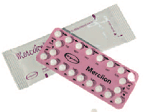 What is it? A daily pill that you swallow which contains oestrogen and progestogen
What is it? A daily pill that you swallow which contains oestrogen and progestogen- Starts to work: After 7 days
- Missed pill rules for the COC are complicated and depend on how many pills you miss, when you miss them and the type of COC you are taking. You can find more information on the combined pill in this NHS guide (external link)
Progestogen-only pill (POP)
 What is it? A daily pill that you swallow containing progestogen.
What is it? A daily pill that you swallow containing progestogen.- Starts to work: After two days
- Advantage: Can be used by women who smoke and are over 35, or those who are breastfeeding
- Disadvantage: Pills need to be taken strictly at the same time daily
- Missed pill rules:
- Take the POP as soon as you remember, and continue taking it
- Use condoms for two days after missing a POP
- If you have unprotected sex within two days of a missed POP you will need emergency contraception
Contraceptive patch
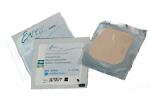 What is it? A small patch stuck to the skin daily, releases oestrogen and progestogen. The patch is changed every 7 days.
What is it? A small patch stuck to the skin daily, releases oestrogen and progestogen. The patch is changed every 7 days.- Disadvantage: May be seen and can cause skin irritation
Contraceptive vaginal ring
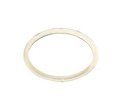 What is it? A small, flexible plastic ring put into the vagina, releases oestrogen and progestogen
What is it? A small, flexible plastic ring put into the vagina, releases oestrogen and progestogen- Advantage: One ring lasts for three weeks.
- Disadvantage: You must be comfortable with inserting and removing it
Focus On: Condoms and Caps
If you’re choosing condoms are your primary contraceptive method, remember they need to be used every time you have sex to work! They also need to be put on properly, kept on the whole time, and disposed of safely. If you’re unsure, check out the Terrence Higgins Trust condom guide (external link).
Male condom
 What is it? A very thin latex (rubber) or polyurethane (plastic) sheath that is put over the erect penis
What is it? A very thin latex (rubber) or polyurethane (plastic) sheath that is put over the erect penis- Effectiveness: 98% if used according to instructions
- Advantage: Condoms protect against pregnancy and are the best way to help protect yourself against sexually transmitted infections
- Disadvantage: Needs to be the right size and shape to reduce the risk of it slipping off or splitting
Female condom
 What is it? A soft, thin polyurethane sheath that loosely lines the vagina and covers the area just outside of it.
What is it? A soft, thin polyurethane sheath that loosely lines the vagina and covers the area just outside of it.- Effectiveness: 95% if used according to instructions
- Advantage: Helps protect you against sexually transmitted infections.
- Disadvantage: Not as widely available as male condoms
Diaphragm/Cap with spermicide
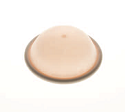 What is it? A flexible latex (rubber) or silicone device, used with spermicide, is put into the vagina to cover the cervix
What is it? A flexible latex (rubber) or silicone device, used with spermicide, is put into the vagina to cover the cervix- Effectiveness: Latex 92 – 96% effective if used according to instructions. Silicone caps are less effective
- Advantage: Can be put in any time before sex
- Disadvantage: If you have sex again extra spermicide is needed. Less effective than all other types
Back to: Pregnancy and Contraception Services.
